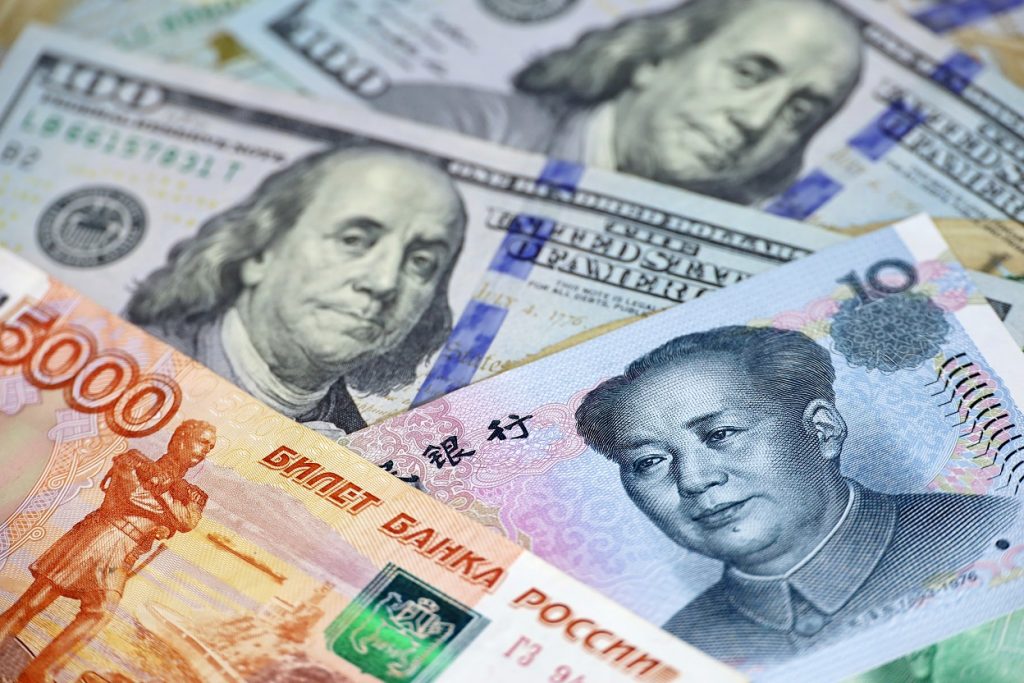Russia-Ukraine: What Does it Mean for Asia and China?
14-03-2022
- While markets globally have been impacted by the geopolitical tensions and ongoing inflationary concerns in the US, we view that our China- and Asia-focused portfolios should be in a better position
- Overall, we believe that the current investing landscape should offer bottom-up investing opportunities as we expect more diverged performances among companies and sectors

Russia-Ukraine Conflict: What happened?
Tensions continue to persist with the ongoing military conflict between Russia and Ukraine. The escalating tensions between the two countries did not bode well to markets, as it added to investor concerns on the persistently high inflation in the US and a more hawkish Fed. With both Russia and Ukraine being major exporters of oil and other commodity products, and ongoing developments on the various trade sanctions by the US and the European Union, the tensions may cause more bottlenecks in the supply chain and push up energy and food prices. This is evidenced by recent substantial price hikes in the commodities market, with Brent oil crude reaching as high as US$ 139 per barrel on 7 March 20221.
We expect tensions between the two countries will prolong longer, and the market is still working to price in this geopolitical uncertainty. However, more importantly, as market drivers associated with the tensions are inflation-related, investors will eventually focus back on the Fed, particularly on having a clearer picture of its balance sheet normalization.
The US Treasury yields have pushed up again after the release of the February CPI to 7.9%2 which is the highest in 40 years. While investors are concerned about inflation and faster take hike making the short end of the yield curve to move up faster, there is some flight to safety buy in the long end, causing the yield curve to further flatten. This also induce the concern of potential economic recession.
In the equities market, the market has been rotating from growth to value stocks amid the faster-than-expected hikes of the Fed. We view that the rotation will last at least up until the end of the first half. While the growth-value valuation gap has started to narrow, it is still above the historical average.
Impact to China and Asia
While markets globally have been impacted by the geopolitical tensions and ongoing inflationary concerns in the US, we view that our China- and Asia-focused portfolios should be in a better position.
In China, the country has been counter-cyclical with its monetary policies. While most developed markets are trying to control inflation, inflation in China has been going down due to weakening demand, leaving it more room to provide stimulus in the economy. In fact, following its shift to a pro-growth stance in December, the government has started monetary easing, which should help lift investor confidence and help the economy to achieve stable growth for the rest of the year. For example, following the RRR cut in December, the interest rate for the medium-term lending facility (MLF) operation has been lowered by 10 bps, and the one-year and five-year Chinese loan market quoted rates (LPR) have been lowered by 10 and 5 bps, respectively. The reduction of the 5-year LPR, which is the benchmark for mortgage interest rates, is the first cut since April 2020. That said, investors continue to be concerned about regulatory risks. However, we view that regulatory uncertainty has peaked and investors will not be as surprised as before.
Outside of China, inflation is also more under control, including Taiwan and most of Southeast Asia. In these markets, we are not seeing central banks in a hurry to increase interest rates. The only exception is South Korea, which started to increase interest rates last year. Meanwhile, most markets in Southeast Asia are also looking past the Omicron variant, as most have continued on their reopening, which should help the market catch up.
We also believe that the Russia-Ukraine tensions will have relatively less impact on the region compared to the west. While the tensions may further drive up inflation, this should benefit resource- and export-heavy Asia, especially Malaysia and Indonesia.
Overall, we expect volatility to continue in 2022, driven by various factors, including inflation, the pace of tapering by the Fed, and regulatory uncertainty in China. Overall, we believe that the current investing landscape should offer bottom-up investing opportunities as we expect more diverged performances among companies and sectors. Currently, we are seeing opportunities in value sectors amid the sector rotation and also continue to favor high-quality companies that are beneficiaries of growth policies.
Source:
1. Reuters, March 2022
2. Bloomberg, March 2022
The views expressed are the views of Value Partners Hong Kong Limited only and are subject to change based on market and other conditions The information provided does not constitute investment advice and it should not be relied on as such All material has been obtained from sources believed to be reliable as of the date of presentation, but its accuracy is not guaranteed This material contains certain statements that may be deemed forward looking statements Please note that any such statements are not guarantees of any future performance and actual results or developments may differ materially from those projected. This commentary has not been reviewed by the Securities and Futures Commission in Hong Kong Issuer Value Partners Hong Kong Limited.



